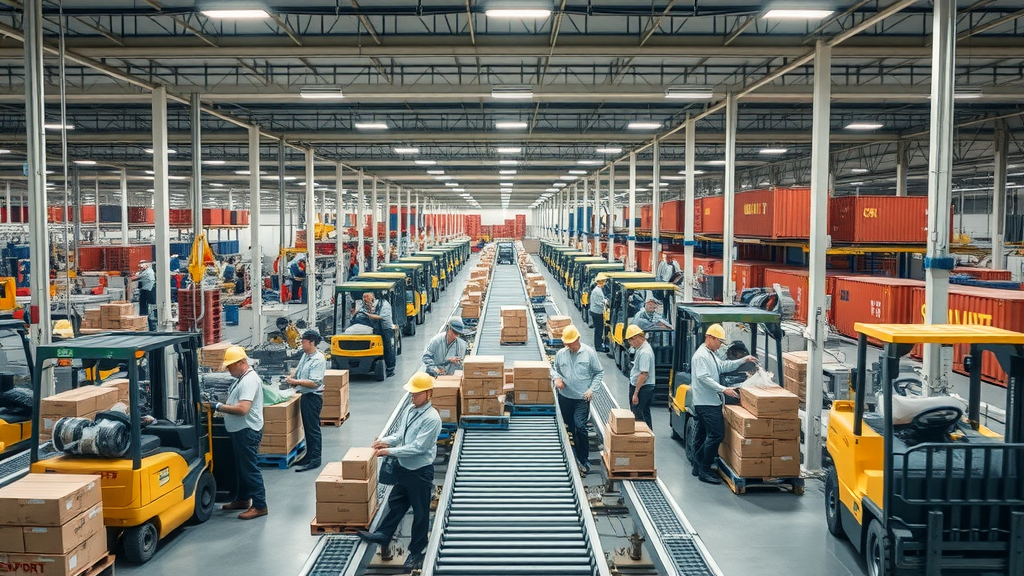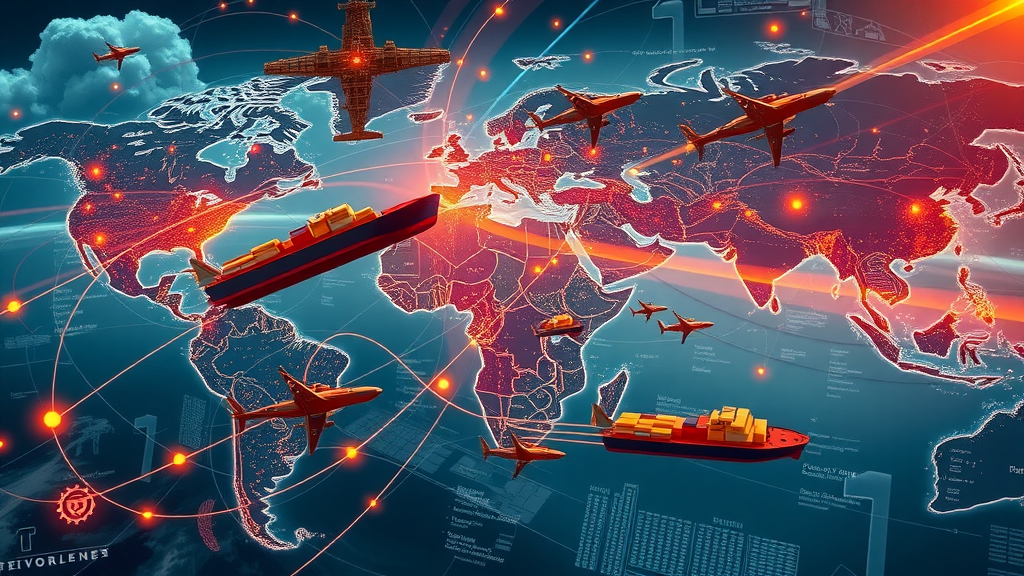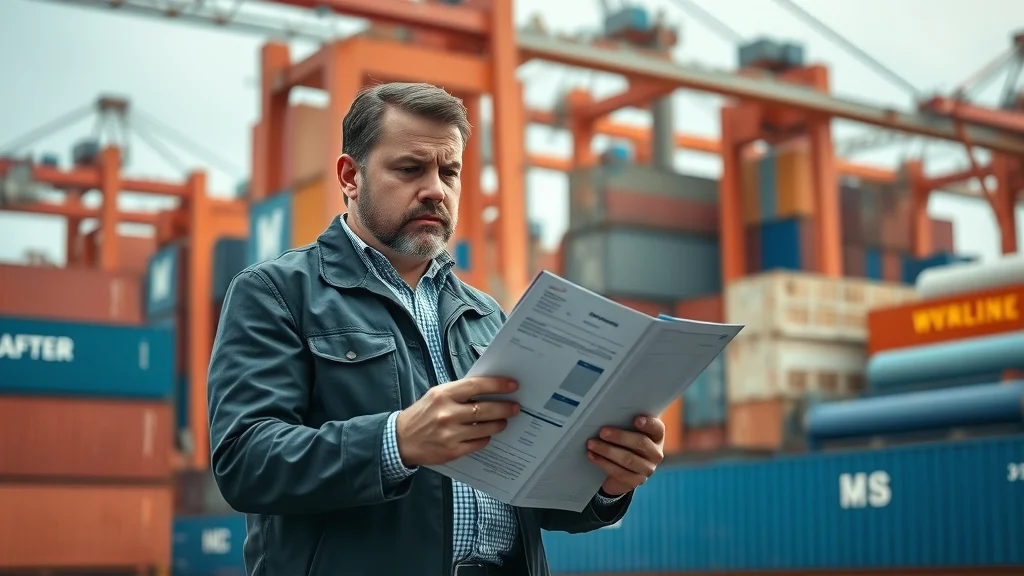Did you know that U.S. manufacturers paid over $80 billion in tariffs in a single fiscal year? The ripple effects from this staggering sum extend far beyond customs and border crossings—reaching deep into the operational strategies and bottom line of businesses everywhere. If you’re a manufacturer, exporter, or supply chain strategist, understanding tariff impacts is no longer a luxury but a critical survival skill. In this article, unlock the realities behind modern tariff policy, trade wars, and the detailed ways tariffs can either constrain or energize your pathway to business growth.
Opening Insights: The Real Numbers Behind Tariff Impacts
Tariff impacts are rarely an abstract concern; they manifest as concrete numbers that directly shift the landscape for U.S. manufacturers and global traders. The United States, for instance, has seen its average effective tariff rate jump by several percentage points within only a few years—driven largely by shifts in trade policy, including recent trade wars and policy responses from the Trump administration. The fallout? Widespread price increases for critical supplies, new complexities in supply chain management, and riskier investments in global markets. These impacts can dictate whether a company stays competitive or falls behind, making it vital for business leaders to understand exactly what’s at stake.
The numbers tell a clear story. Beyond the headline figures, companies face higher prices for imported goods, compression on profit margins, and increased volatility in international deal-making. On a sector-by-sector level, industries from steel to electronics feel these tariff shocks in unique ways. To remain resilient, businesses must actively track these stats and adopt flexible strategies that anticipate the next policy turn or tariff rate hike. Let’s dive deeper into how these pressures impact strategic business decisions.

"Did you know that U.S. manufacturers paid over $80 billion in tariffs in a single fiscal year? The ripple effects extend far beyond border crossings."
What You'll Learn: Gaining Clarity on Tariff Impacts
- Understand key tariff impacts on modern businesses
- See how tariff rate and policy shifts affect profitability
- Explore the role of trade war in shaping global opportunities
- Identify risks and advantages for exporters and importers
- Prepare your manufacturing or supply chain strategy
Tariff Impacts Explained: A Strategic Overview
For businesses maneuvering today’s global economy, the nuance of tariff impacts cannot be overstated. Tariffs, or taxes on imported goods, are more than just fiscal tools—they ripple through every layer of business operations: raising costs, shifting supply chain patterns, and amplifying international tension. Crafty strategic planning now demands a working knowledge of how each tariff rate change might shift overall business outcomes or leave a company exposed in fluctuating markets.
Equally, as trade wars intensify and reciprocal tariffs emerge, the ability to decode these changes rapidly separates market survivors from those who struggle. From president Trump’s sweeping tariff announcements to present-day policy shifts, being proactive with information is essential. Understanding the origin, nature, and projected consequences of recent tariff policy ensures business leaders allocate resources efficiently and avoid the pitfalls of reactive decision-making.
How Tariff Rate Changes Influence Business Outcomes
The adjustment of tariff rates—even by a single percentage point—can send seismic waves across an enterprise's P&L statements. For manufacturers, a sudden hike in tariffs often equates to increased costs for imported components or raw materials. This price uptick is frequently passed down the value chain, resulting in higher consumer prices and diminished demand, which can compress profit margins and stifle growth initiatives. Moreover, the unpredictability of tariff announcements makes long-term business forecasting a moving target, requiring ongoing scenario planning and agile operational models.
During the recent trade war era, companies reported drastic shifts in sourcing as they scrambled to deflect higher costs from higher tariffs. Some diversified their supplier networks, while others exited certain export markets altogether in favor of less volatile terrain. Fluctuating tariff rates may force businesses to pause investment plans, renegotiate supply contracts, or re-examine their relationship with overseas partners. Each action taken in response to a new tariff rate dominoes into larger strategic pivots, fundamentally altering business trajectories.

Defining Tariff Impacts in the Current Global Market
Today, the definition of tariff impacts encompasses much more than a simple increase in the cost of imported goods. It includes ripple effects like impaired cross-border negotiations, restructured global supply chains, and abrupt changes in labor and production planning. With dropdowns and escalations between the United States and partners such as Canada and Mexico, businesses are compelled to monitor not only current tariff rates but also shifting political winds and reciprocal tariff trends that may alter the playing field overnight.
Moreover, the impact extends to patterns in inventory management and cash flow. Companies must weigh the cost of holding extra inventory as a hedge against volatility versus the risk of supply shortages due to fast-changing import restrictions. The net result is a landscape in which agility and data-driven intelligence are valued above all. Understanding the nuances of recent tariff policy helps businesses remain adaptive, spot hidden opportunities, and avoid costly pitfalls.
Trade War and Tariff Policy Shifts: Key Drivers & Fallout
The term trade war conjures images of rapidly escalating tariffs, diplomatic standoffs, and volatile headlines. In recent years, trade tensions between the United States and several major economies have shaped the most significant tariff policy shifts in decades. The Trump administration, in particular, set the tone with its aggressive pursuit of reciprocal tariff deals, arguing that previous agreements had left American manufacturers at a disadvantage.
As a direct result, sectors like steel, aluminum, and electronics saw sharp tariff increases, compounded by reciprocal moves from trade partners. The repercussions rippled through balance sheets, project planning, and even hiring decisions. Trade deals suddenly became complex negotiations involving not only traditional supply and demand but also political calculus and risk mitigation strategies. Taken together, these ongoing shifts underscore the importance of aligning trade strategy with the latest tariff policy updates.
The Role of President Trump and the Trump Administration in Tariff Policy
Few leaders have influenced tariff policy as overtly as President Trump and his administration. Driven by the aim to protect domestic industries and rebalance perceived trade deficits, the Trump administration imposed exceptionally high tariffs on products ranging from steel and aluminum to electronics and agricultural goods. While proponents pointed to increased leverage in trade negotiations and a resurgence in some domestic manufacturing sectors, critics noted that many companies faced higher prices across their entire supply chains, often leading to narrowed profit margins or portfolio adjustments.
As the trade war heated up, the retaliatory response from countries like China, Canada, and Mexico led to a complex system of reciprocal tariffs. These policy maneuvers often caused market instability, complicated trade deals, and forced both large corporations and smaller manufacturers to seek creative solutions or risk being squeezed out of international markets. The Trump era made tariff monitoring a boardroom priority, showing how quickly policy can rewrite the economic rulebook for global businesses.

United States Trade Policy: Adapting to a Changing Environment
A defining feature of modern U.S. trade policy is its remarkable agility. Policymakers now frequently adjust tariff rates to address evolving geopolitical realities—from punitive tariffs in response to alleged unfair practices, to negotiated rollbacks as part of broader trade deals. For domestic businesses, staying attuned to these rapid shifts is a non-negotiable element of strategic planning. Every tariff announcement signals a potential pivot point for exporters, importers, and manufacturers alike.
Furthermore, legislative changes or executive orders can fundamentally reshape the business environment overnight. This dynamic context emphasizes the need for continuous intelligence-gathering and quick operational shifts in response to policy revisions. Success increasingly relies on understanding not just the policy itself, but the political motivations and probable counter-moves from international partners. Only by embracing this nuanced approach can businesses fully harness or shield themselves from the latest tariff impacts.
Reciprocal Tariff Strategies and Their Impacts
Reciprocity is at the heart of many recent tariff battles. When one country applies a new tariff, affected trade partners often retaliate in kind, sparking a cycle of escalating reciprocal tariffs. While intended to level the playing field, these strategies can lead to prolonged uncertainty, tangled litigation, and massive shifts in supplier and buyer behavior. For some industries, the introduction of a reciprocal tariff by a major market led to immediate loss of competitiveness, especially in heavily imported or exported product lines like automobiles or electronics.
However, not all sectors respond in the same way. Some manufacturers have leveraged these moments to pivot to new markets or double-down on domestic production, finding unexpected growth in the midst of global disruption. The key is recognizing that reciprocal tariff strategies don’t unfold in a vacuum—they are shaped by ongoing negotiations, global trade deals, and the willingness of businesses to innovate in response to each new round of tariff impacts.
Tariff Impacts on Manufacturing: Practical Case Studies
Real-world case studies best reveal the tangible outcomes of changing tariff rates for U.S. manufacturers. For example, after the Trump administration’s steel and aluminum tariffs took hold, many American producers experienced a surge in domestic demand—only to later grapple with higher input costs and retaliatory measures that limited overseas sales. Meanwhile, electronics manufacturers faced disruptions across their supply chains, with some relocating production from China to Southeast Asia to sidestep rising tariffs. Automotive firms likewise saw higher prices for imported components and altered their product strategies in response to evolving trade policy.
Each scenario demonstrates the complexity of managing tariff impacts on manufacturing operations, encompassing everything from cash flow and inventory management to long-term capital investments. Businesses that built flexible supply chains and maintained an eye on evolving tariff policy were able to weather adverse shocks, while others struggled to absorb new costs or realign their export orientation. Such case studies underscore the importance of data-driven strategy and proactive adjustment in maintaining resilient growth.

| Sector | Tariff Impact | Export Implications | Import Implications |
|---|---|---|---|
| Steel | Higher raw material costs, some increase in domestic demand | Retaliatory tariffs limit overseas sales, margin pressure on exports | Significant price increase on imported steel components |
| Electronics | Supply chain disruptions, relocation of assembly to avoid tariffs | Export delays, need for alternative sourcing | Rising cost for key components sourced globally |
| Automotive | Comprehensive cost increases, realignment of production plans | Competitive disadvantage in certain overseas markets | Higher prices for imported parts, complexity in trade deals |
Steel, Electronics, and Automotive: Unique Tariff Impacts
While all sectors feel the heat of tariff impacts, steel, electronics, and automotive industries each encounter distinct challenges. The steel sector experienced sharp price swings as higher tariffs impacted both domestic mills and their international customers. Electronics, with their complex supply chains, faced profit margin erosion and delays as manufacturers scrambled to shift sourcing and assembly points in response to trade policy changes. Automotive companies found themselves negotiating an intricate maze of trade deals to maintain access to vital imported components while protecting export competitiveness.
For each, strategic foresight has been essential. Steelmakers onshored production where possible, while electronics giants diversified their global footprint to mitigate risk. Automotive manufacturers negotiated more flexible contracts to adjust rapidly to tariff rate fluctuations. As illustrated, targeted policies and reciprocal tariffs can spur innovation, but they also introduce new complexities that favor the most agile operators.

Supply Chain Risks and Business Resilience
The interconnectedness of modern supply chains means a single tariff rate adjustment can affect far-flung suppliers, logistic firms, and end-consumers. Businesses that sourced from a variety of foreign vendors, especially in regions with evolving trade relationships, often experienced the greatest disruption. As tariffs imposed by the United States or other countries kick in, supply chains become more rigid, inventory holding costs rise, and contingency plans are sorely tested.
Effective resilience strategies depend on scenario analysis and rapid response capabilities. Companies that invest in real-time data tracking, supplier diversification, and staff upskilling are better positioned to ride out the storm. In the end, resilient supply chains underpin sustainable business growth, regardless of how often tariff policy or trade war dynamics change the rules.
Tariff Rates: Navigating Complexities in a Trade War
The ongoing trade war has made tariff rates a headline concern and a core factor in business planning. Fluctuations in these rates can sharply alter forecasts, making fixed budgeting or long-term investment perilous. As each trade policy iteration is announced by policymakers—be it the White House, commerce departments, or international bodies—companies must revisit cost models and supply scenarios frequently.
Complexity can take many forms: staggered implementation schedules, differentiated tariffs for distinct categories, or layered reciprocal tariffs that pile on unpredictability. Forward-thinking businesses now dedicate resources to dedicated trade risk monitoring and flexible budget frameworks, anticipating not just the impact of known tariff rates, but also potential future shifts if the global economic climate continues to destabilize.

How Fluctuating Tariff Rates Alter Business Forecasts
Every percentage point increase in a tariff rate can tip a finely balanced business model into the red. Companies must recalculate landed costs, estimate new break-even points, and prepare for lower margins—or rethink key product lines altogether. These adjustments cascade into shifts in inventory policies, overtime budgets, and capital investment decisions.
In this climate, regular communication with trade partners and real-time analysis of policy updates are more than best practice—they’re essential. Otherwise, disruptions hit hard: goods stuck in customs, unplanned expenses, or lost deals due to changed price levels. Businesses that treat tariff rate volatility as a permanent aspect of operations emerge stronger over time, using each challenge to refine their forecasting and decision-making playbook.
Tariff Impact Mitigation: Strategic Planning for Domestic Operators
Strategic mitigation of tariff impacts begins with intelligent scenario planning, supplier negotiations, and continual market analysis. Proactive companies develop alternate sourcing arrangements with vendors outside high-tariff zones, negotiate flexible contract terms, and maintain financial reserves to absorb sudden cost hikes. Additionally, leveraging trade associations and government resources for up-to-date tariff policy updates can provide that extra edge when policy landscapes shift unexpectedly.
Many successful domestic operators also turn to automation, process optimization, and selective reshoring to increase competitiveness and reduce dependency on vulnerable international partners. These practices, combined with robust risk management, can not only mitigate tariff impacts but also carve out new growth opportunities—even in an unpredictable trade environment.
Trade War Fallout: Winners, Losers, and Long-Term Implications
The true impact of the recent trade war and ever-changing tariff policies goes beyond short-term headlines. While a handful of protected industries have seen near-term gains, the broader economy faces risks that may outlast the current policy environment. Businesses that benefited early from higher domestic demand often encounter diminishing returns as input costs and retaliatory tariffs catch up. Meanwhile, consumers face higher prices and fewer choices, while global trade relationships become strained.
Long-term, the adaptation pressures created by frequent tariff increases can spur either innovation or retreat. Companies that treat each disruption as a learning opportunity, investing in new processes and global partnerships, position themselves as winners in the next economic cycle. Those who hesitate or cling to outdated models may struggle to stay relevant as trade policy and tariff rates continue to evolve.
Tariff Impacts: Short-Term Gains Versus Long-Term Risks
Tariffs can create a temporary sense of security for specific industries, but these short-term gains may mask the onset of broader risks. For example, manufacturers protected by higher import tariffs may see initial boosts, only to later confront eroding global competitiveness, rising input costs, and organizational inertia. Over time, retaliatory measures and diminished market access often outweigh any early advantages, resulting in compressed margins or lost market share.
Data suggests that while certain segments have weathered tariff storms well, many others have experienced long-term disruptions in their global partnerships and strategic plans. To maintain sustainable growth, business leaders must weigh immediate benefits against likely downstream consequences in an intricate, evolving trade landscape.

Global Supply Chains: Tariff Impacts on Efficiency and Cost
The recent wave of reciprocal and escalating tariffs has fundamentally altered the structure and cost dynamics of global supply chains. Companies are now re-evaluating everything from contract terms and logistics models to the strategic placement of manufacturing facilities. For many, this has meant switching to new international partners, investing in digital tracking systems, or even bringing production closer to home.
Yet, efficiency losses—through longer lead times or increased administrative complexity—often accompany these changes. Businesses must carefully measure cost savings from tariff avoidance against possible reductions in scale or efficiency. Ultimately, the most resilient operators are those who blend flexibility with robust analytics to continuously optimize their supply chain investments in the face of shifting tariff impacts.

Opinion: Are Current Tariff Policies Moving Us Forward?
"Tariffs protect some interests but often at an outsized cost to innovation and competitive advantage."
While well-intentioned in their quest to defend domestic industries, current tariff policies often impede business innovation and the pursuit of competitive advantage. Short-term measures may offer relief to select sectors—yet, increasingly, the collateral damage is hampering entrepreneurship, stifling global ambitions, and deterring investments in transformative technologies. As a result, many U.S. manufacturers face a critical decision: adapt quickly, diversify, and innovate, or risk stagnation in a future shaped more by political tides than market opportunities.
It’s time for a nuanced national conversation about trade, where protecting jobs and industries goes hand-in-hand with nurturing a culture of agility and technological leadership. The pathway to resilience demands more than blanket tariff hikes; it requires forward-thinking trade policy, investment in skills, and deeper collaboration across public and private sectors.
Tariff Impact Realities: Beyond the Numbers
Behind every headline-grabbing figure, the deeper impacts of tariffs play out quietly in boardrooms, factory floors, and strategic planning sessions. Tariff hikes have forced companies to retool supply chains, cut costs, and in some cases, reduce labor or delay investments. While data provides visibility, the true cost is seen in lost momentum, constrained capacity for international growth, and paralyzing uncertainty.
As global competition intensifies, merely surviving isn’t enough. Business leaders must develop a sophisticated understanding of how tariff impacts radiate beyond financials—affecting talent planning, research investment, and even brand reputation. Companies that face reality head-on, investing in analytics and fostering flexible mindset cultures, will build the resilience required for the next era of trade policy and economic opportunity.

People Also Ask: What was the impact of tariffs?
Answer: The impact of tariffs included increased costs for businesses, shifts in supply chain sourcing, and political tension between trading nations.
Tariffs imposed by the United States and other economies resulted in higher operating expenses for businesses across many sectors, with manufacturing, automotive, and electronics being particularly affected. In response, companies had to revisit their supply chain strategies—often seeking alternative sourcing options or renegotiating contracts. Compounding these challenges, political relations between trading nations became strained, elevating the risk of further reciprocal tariffs and market volatility.
People Also Ask: What are the 8 effects of tariffs?
Answer: Eight effects of tariffs include higher consumer prices, reduced trade volume, retaliation from other nations, supply chain adjustments, profit margin compression, innovation slowdowns, shifts in global market share, and political leverage.
Tariffs introduce disruptive forces into global commerce, influencing price structures and market dynamics. Consumers typically see price hikes on everyday goods, while companies manage slimmer profit margins and redirected trade flows. In response, affected countries may levy their own tariffs, triggering cyclical rounds of retaliation. Supply chains become less flexible and more expensive, and long-term effects may include diminished innovation, loss of global market share for exporters, and new leverage for governments in political negotiations.
People Also Ask: What are the negatives of tariffs?
Answer: Negatives of tariffs include increased production costs, reduced efficiency, potential job losses, retaliatory tariffs, and overall economic slowdowns.
By raising the cost of both intermediate and finished goods, tariffs reduce efficiency and competitiveness for businesses. Smaller manufacturers and exporters are often hardest hit, as they lack the financial buffer to absorb new costs. This can lead to job losses or employer-driven wage stagnation as companies tighten their belts. Retaliatory moves from trade partners may further depress international sales and slow overall economic growth both domestically and abroad.
People Also Ask: How will tariffs affect the US dollar?
Answer: Tariffs can raise the value of the US dollar in the short term but may eventually weaken it if foreign demand for US exports falls.
While an initial tariff hike can attract investment into the dollar as global money moves to safer assets, sustained or wide-reaching tariffs may reduce international demand for American goods. If exports decline, pressure on the dollar mounts, potentially lowering its value over time as trade imbalances worsen. Businesses involved in international trade should carefully monitor these currency implications as part of their ongoing risk management strategy.
Key Takeaways: What Every Business Leader Must Remember about Tariff Impacts
- Tariff impacts are unpredictable and multifaceted
- Staying ahead of tariff policy shifts is critical
- Develop resilient and flexible supply chain strategies
- Evaluate both direct and indirect tariff impacts
FAQs: Clarifying Tariff Impacts in Today’s Market
How do tariff rates get determined and modified?
Tariff rates are typically set and changed by government agencies or legislative bodies, responding to economic, political, or industry-specific factors. Adjustments may be driven by new trade deals, economic policy goals, or as a reaction to unfair trade practices by other nations. Policy-makers often review economic data, industry feedback, and the global trade environment before announcing changes.
Can smaller businesses absorb tariff impacts as effectively as large corporations?
No, smaller businesses generally struggle more with absorbing increased costs from tariffs due to limited resources and negotiating power. They often find it harder to pass higher prices to customers or rapidly shift their supply chain sourcing. Larger corporations may have more diversified sourcing options and better leverage in supply contract negotiations, enabling them to withstand tariff shocks more effectively.
What are proactive steps for mitigating tariff risks?
Businesses can mitigate tariff risks by diversifying their supplier base, investing in trade analytics, maintaining flexible contracts, and participating in industry advocacy. Engaging with trade associations and regularly monitoring policy updates are also key. Some companies may also seek out trade deal opportunities or invest in automation to offset higher costs from tariff increases.
Conclusion: Navigating Tariff Impacts for Sustainable Business Growth
Success amid tariff volatility calls for continuous adaptation, proactive strategy, and a willingness to innovate. Stay informed and agile to transform tariff impacts into growth opportunities.
"For every business challenge that tariffs present, opportunity springs for the agile and informed."
Action Steps: Stay Informed & Proactive on Tariff Impacts
- Monitor tariff policy and trade war updates regularly
- Engage with industry experts and trade associations
- Adjust manufacturing and export strategies proactively
- Subscribe to reputable global trade news sources
Manufacturer Call to Action: Don’t Miss Out—Stay Ahead of Tariff Impacts
Manufacturer don't miss out! Stay informed on global trade shifts—tariffs, reshoring, and supply chain updates could reshape your strategy. Subscribe to Global Trade News for Latest updates. Call 203-271-7991 today.
Understanding the multifaceted impacts of tariffs is crucial for businesses aiming to navigate the complexities of global trade. The article “Why Tariffs Hurt the U.S. Economy: Long-Term Costs for Families, Businesses, and Growth” provides an in-depth analysis of how tariffs increase manufacturing input costs, lead to job losses, and hinder long-term economic growth. Additionally, the U.S. Chamber of Commerce’s piece, “The Impact of Tariffs on American Businesses,” highlights the challenges tariffs pose, especially for small businesses, by raising prices and disrupting supply chains. For a comprehensive understanding of how tariffs can affect your business and strategies to mitigate these effects, these resources offer valuable insights.
 Add Row
Add Row  Add
Add 




Write A Comment